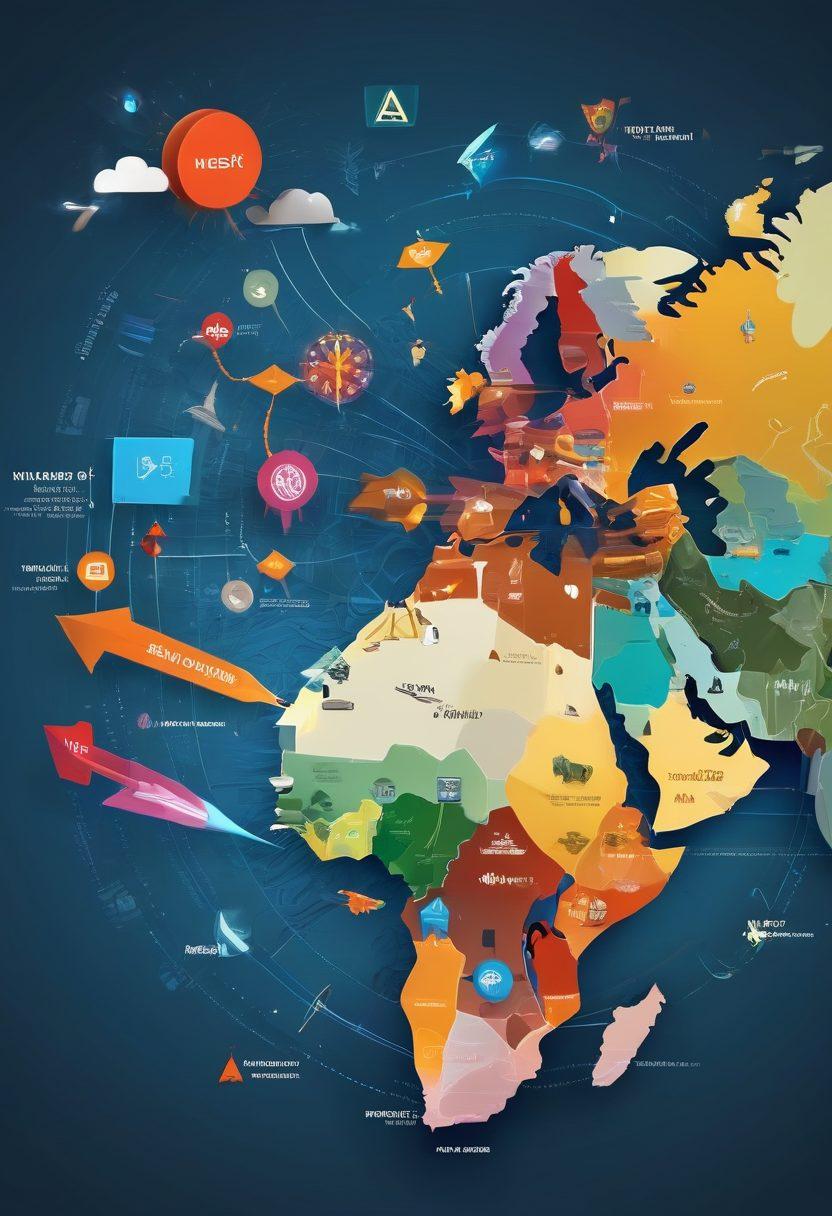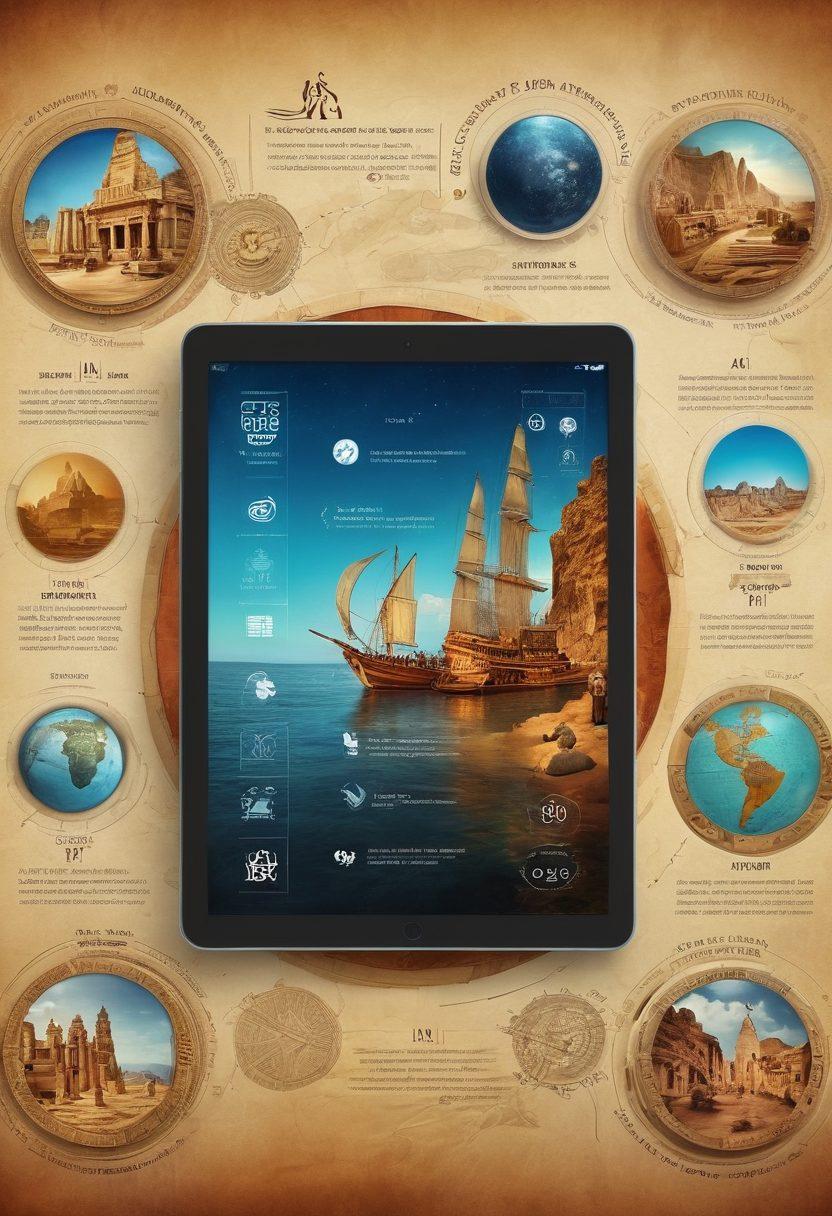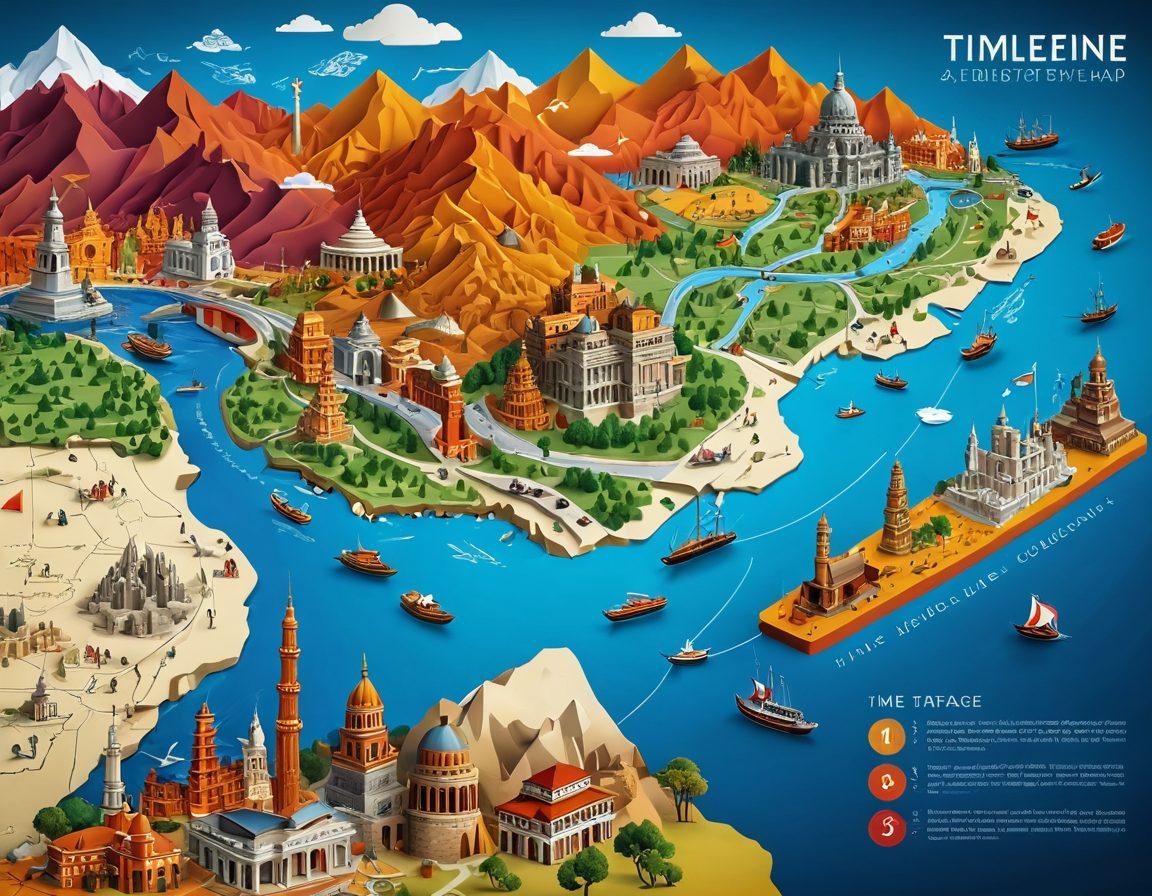Exploring the Power of Interactive History: Creating Your Own Dynamic Timeline
Have you ever found yourself lost in the vast sea of historical events, unsure of how they connect or unfold in time? Creating your own dynamic timeline can be a powerful way to organize chronological events, finding clarity in the chaos of history. Imagine if you could take all that information swirling around—wars, revolutions, discoveries—and map it out in a way that captures not just dates but the stories behind them. In this journey, we will explore how to unleash creativity through crafting a digital timeline that highlights the key moments of history while giving you the liberty to express your understanding and analysis of those events.
The beauty of a historical timeline lies in its ability to provide a visual representation of time-related events. Have you ever thought about how a timeline visualization can deepen your appreciation of the past? A well-crafted timeline tool goes beyond simply displaying dates; it invites users to dig deeper into the significance of each event, encouraging a more profound engagement with historical analysis. By connecting events that span decades or even centuries, you create not just an event chronology but a rich tapestry of human experience, weaving together insights that can inspire future generations through heritage timeline mapping.
To begin, select a timeline software that resonates with your design style and needs. There are numerous timeline platforms available that make timeline planning a breeze. Whether you aim to document an event schedule for a specific era or highlight pivotal moments across a broad history, these tools provide templates and functionalities to streamline your project. Keep in mind that the key to a captivating digital timeline is not just in its aesthetics but in the richness of its content. Each time marker should serve as a portal into stories and personal reflections, transforming how historical events are perceived.
Once you have your timeline platform set up, it's time to dive into the event sequence. Choose a theme or a specific focus—perhaps the Industrial Revolution, civil rights movements, or even a personal family history. How will you represent each event? Will you include images, videos, or links to further reading? As you create your time sequence, think about how you can make the journey interactive. Encourage viewers to click on different timelines you’ve charted, offering them a chance to explore the significance behind the events woven into your narrative. This interactivity prompts curiosity—what caused these events? What were their impacts?
In conclusion, crafting your own digital timeline for historical events is not just an exercise in chronology; it is an invitation to explore the past creatively. As you delve into history mapping, consider how each entry serves as a lesson in resilience, innovation, or change. Ultimately, your timeline will not just be a record of what happened, but a bridge connecting past events to the present, enriching your understanding of the world around us. So, are you ready to unleash your creativity? Start today and create a dynamic timeline that reflects your unique perspective on history.
From Past to Present: Mastering Event Chronology with Interactive Tools
Have you ever wondered how the past shapes our present? The intricate web of chronological events weaves through time, creating a tapestry of human experience. In an age dominated by technology, mastering the art of history mapping has never been more critical. With interactive tools like dynamic timelines, we can explore historical events in a profound way, making connections that were previously hidden in the linear flow of traditional history teaching. So, how do we transition from mere observation of past occurrences to an engaging, participative exploration of our collective heritage?
Imagine standing before a vast digital timeline, where each event marker glows lightly, inviting you to click and learn more. Interactive history is not just about displaying facts; it is about creating a dialogue between the past and the present. Using timeline software and platforms, we can craft an event timeline that transforms historical analysis into an engaging storytelling experience. As you delve into time-related events, consider how each piece of the puzzle influences our understanding of contemporary issues. How can we harness these insights to foster a more informed society?
As you embark on your journey with timeline visualization, remember that the process of timeline planning can be just as rewarding as the destination. Begin by selecting significant historical milestones that resonate with you, whether they’re personal or global. This self-curated historical timeline becomes a reflection of your interests and values, allowing for a more profound connection with the past. What stories will you uncover? What lessons will you carry forward? The power of history lies not just in dates but in the emotions and experiences tied to those dates, illuminating the human experience behind every event chronology.
Interactive tools like date mapping truly revolutionize how we understand the sequence of events. Gone are the days of memorizing dates and names; instead, we can interact, explore, and visualize how events overlap and influence one another. By breaking free from traditional formats, we can engage with heritage timelines that speak directly to our hearts and minds, offering a multi-dimensional approach to learning. How will this shift in perspective alter your own interactions with history? Perhaps it will ignite a passion for research or encourage you to share forgotten stories with others.
At the end of the day, the essence of mastering event chronology through interactive history lies in nurturing curiosity. As we explore, create, and connect with the past through digital timelines, we empower ourselves and others to view history not just as a series of factual occurrences but as vibrant narratives that inform our present actions and future choices. Are you ready to embark on this journey? Dive into the world of timeline tools and unleash your creativity, for the power of history awaits!
Mapping Heritage: Visualizing Time-Related Events in a Dynamic Timeline
Have you ever marveled at how intricate our past is? Picture a vast canvas filled with chronicles of different civilizations, influential figures, and monumental events that shaped our world today. This canvas can come to life through a dynamic timeline—a powerful tool that not only maps out history but also engages its viewers. Mapping heritage through a dynamic timeline allows us to visualize time-related events and make sense of a seemingly tangled web of chronological events. As the famous historian Peter N. Stearns said, "History is a canvas painted with facts, and a timeline is the frame that brings it to life." So, how can we unlock the treasures embedded in our past using timeline visualization?
Imagine you are able to follow the footsteps of your ancestors or significant historical events as they unfold before your eyes. Using a timeline tool or timeline software, you can create an event schedule that details your own unique narrative or a broader historical analysis. A digital timeline can serve as your personal heritage timeline, capturing every time marker significant to your family or community. As we explore different moments in history, from the rise and fall of empires to the development of art movements, the ability to see these events in a time sequence offers profound insights and connections.
Have you noticed how often our education system overlooks the interplay of events in history? Learning through interactive history, especially using timeline platforms, elevates the experience. Consider an event chronology where not just dates are memorized but stories are shared—what moment in time had you feeling as though you were a part of it? By creating a dynamic timeline, you're not just ticking boxes off an event schedule; you're engaging with your heritage, understanding the motivations behind actions, and examining the consequences of decisions made centuries ago. This can become an enriching journey for students, teachers, and history enthusiasts alike.
Timeline planning can seem daunting at first, but it can be incredibly rewarding. Picture this: organizing significant historical events in a visually appealing way that tells a story—whether it's the evolution of technology or the impact of various movements on society. With the aid of various timeline visualization tools, anyone can become a curator of their own history. Start small by mapping out a few key historical events, and then, gradually, work your way towards a comprehensive event timeline. What pivotal moments deserve your attention? You define history by what you value most.
Heritage is more than just a collection of dates or events; it’s a living tapestry of cultures and traditions that echo through generations. Through history mapping and a deep dive into the narratives of our past, we can foster a stronger connection to our roots. So, are you ready to explore the power of a dynamic timeline? Whether you are crafting your personal story or enlightening others about massive historical events, the journey of visualization can be transformative. Embrace the adventure within every time-related event, and let's bring history to life in a way that inspires curiosity and understanding!


